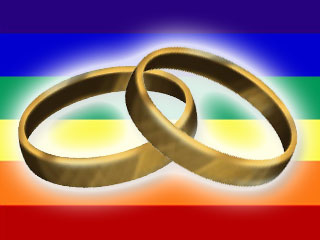The Language of Gay Rights, Faith and Judicial Tyranny

They ask for equal dignity in the eyes of the law. The Constitution grants them that right. The judgment of the Court of Appeals for the Sixth Circuit is reversed.
Justice Anthony Kennedy in Obergefell v Hodges 576 US_(2015)
US Supreme Court rulings can have the power of seismic ruptures. Few judiciaries can claim to have had quite the same effect on the social and political structure of the United States. In many countries, judges tend to the undergrowth, rather than prune the entire canopy of a country’s life. Recently, it has been busy going about keeping the political arm of government engaged, excited and even worried. There was the upholding of the Affordable Care Act. Then came the 5-4 ruling giving same-sex couples the right to marry in every US state.
The decision of Obergefell v Hodges centred on the Fourteenth Amendment, is spiked with the divisiveness that the very idea of conjures up. Marriage may historically be based on the building of bridges and the weaving of alliances; but it has been democratised, becoming both a sword and shield for its various proponents. The court held that States were required “to license a marriage between two people of the same sex and to recognise a marriage between two people of the same sex when their marriage was lawfully license and performed out-of-State.”[1]
Much of this lies in textual wrangling, seeking to stretch out meanings with mean feats of interpretation. There are the fundamentalists who read the Constitution as they would the bible: as a document of original intent that cannot be judged by contemporary standards. To treat it as a product of evolution, as opposed to a document of fossilized standing, is to fall into the sin of invention and, worse still, judicial legislation. Some debates should be had outside the court.
Whether same-sex marriage is a good idea should be of no concern to us,” wrote the dissenting Chief Justice John Roberts. The Supreme Court “is not a legislature.” He reminded those who cared of the Federalist No. 78 by Alexander Hamilton: that the court should exercise “neither force nor will but merely judgment.” In a neat snipe against the majority opinion, the Chief Justice suggested that, “much of the majority’s reasoning would apply with equal force to the claim of a fundamental right to plural marriage.” Justices Antonin Scalia and Clarence Thomas were also in fighting mood, calling “attention to this Court’s threat to American democracy.” The ruling suggested, “that my Ruler, and the Ruler of 320 million Americans coast-to-coast, is a majority of nine lawyers on the Supreme Court.” Debate had been stifled, and determined.
The majority, consisting of the author of the opinion Justice Anthony Kennedy, and Justices Ruth Bader Ginsberg, Stephen Breyer, Sonia Sotomayor, and Elena Kagan, differed. Concepts of liberty change. More to the point, they are learned over time as teachable truths: “The nature of injustice is that we may not always see it in our own times. The generations that wrote and ratified the Bill of Rights and the Fourteenth Amendment did not presume to know the extent of freedom in all of its dimensions, and so they entrusted to future generations a charter protecting the right of all person to enjoy liberty as we learn its meaning.
This division has mirrored the political dimension, with thirteen US states having banned gay marriage prior to the ruling. The Texas attorney-general Ken Paxton (R) typifies this sentiment. “Friday, the United States Supreme Court again ignored the text and spirit of the Constitution to manufacture a right that simply does not exist.”
“The Supreme Court,” suggested a very irate Mike Huckabee, “has spoken with a very divided voice on something only the Supreme Being can do – redefine marriage.” He promised not to “acquiesce to an imperial court any more than our Founders acquiesced to an imperial monarch.” The response from some members of the GOP was always going to verge between criticism of judicial activism and threatening promise. Texas Senator Ted Cruz, in somewhat broken language, suggested that, “Yesterday and today were both naked and shameless judicial activism.”[2]
Florida Senator Marco Rubio produced that rather aged solution of conservative judicial replacements, something that may well feature in his 2016 presidential campaign. This will star the cult of originalism in its most fundamentalist sense. “As we look ahead, it must be a priority of the next president to nominate judges and justices committed to applying the Constitution as written and originally understood.”[3]
As with previous other Supreme Court decisions, resistance will be mounted, despite the general, if resigned feeling in some legislatures that the judges overstepped the mark. Paxton has already made it clear that county clerks may refuse marriage licenses to same-sex couples based on religious beliefs on the idea of marriage. The strength of such beliefs “depends on the particular facts of each case.”[4] Such a reading is rather optimistic in its discrimination: public officials have no place in deciding who they can or can’t serve on such issues.
In what is the quintessential American way, the occasion of legal victory often becomes a carnival of photographed, filmed celebration. Elderly couples have limped to the altar; long standing unions have received the marriage blessing.[5] Even Arnold Schwarzenegger, himself a previous sceptic, has gotten into the celebrations. But stripped to its essentials, the decision again resolved in favour of upholding that most remarkable of documents, the Bill of Rights, still the visible rock over a sea of judicial and legislative scrounging. What that rock means, however, continues to vary.
Dr. Binoy Kampmark was a Commonwealth Scholar at Selwyn College, Cambridge. He lectures at RMIT University, Melbourne. Email:[email protected]

